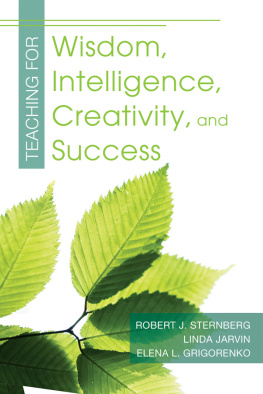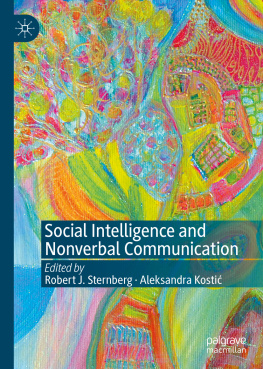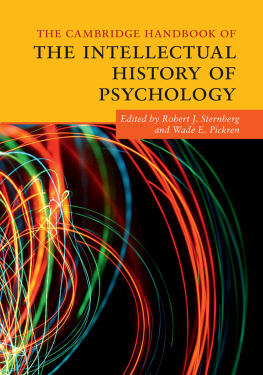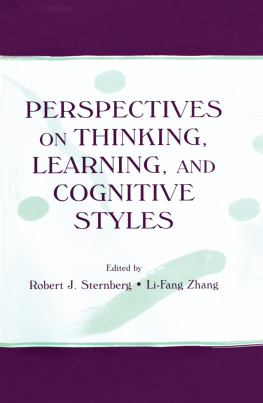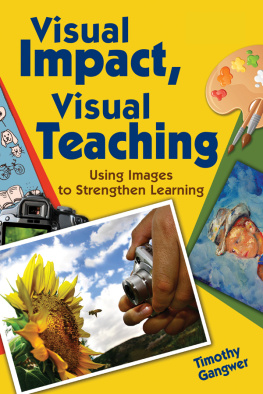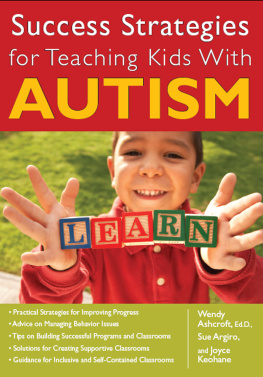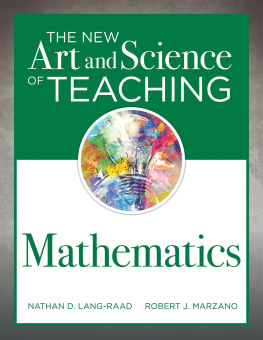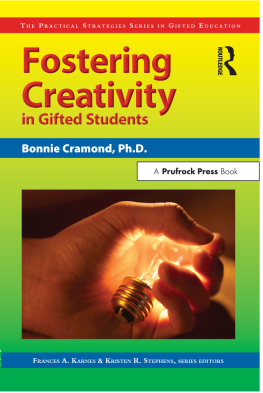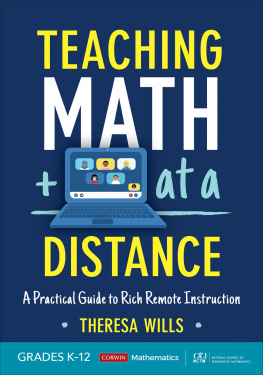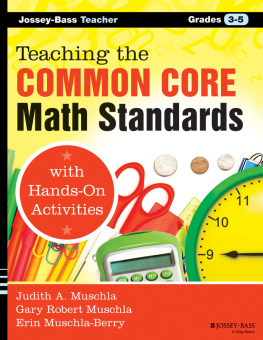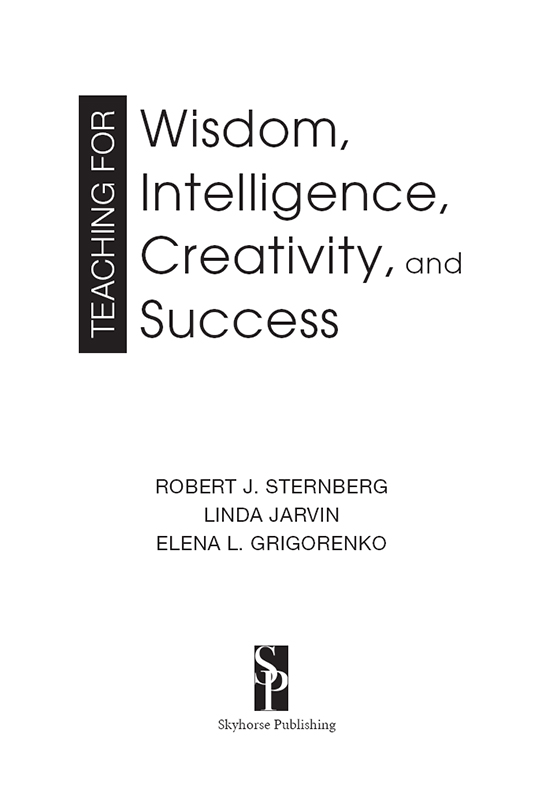Copyright 2009 by Robert J. Sternberg, Linda Jarvin, and Elena L. Grigorenko
First Skyhorse Publishing edition 2015.
All rights reserved. No part of this book may be reproduced in any manner without the express written consent of the publisher, except in the case of brief excerpts in critical reviews or articles. All inquiries should be addressed to Skyhorse Publishing, 307 West 36th Street, 11th Floor, New York, NY 10018.
Skyhorse Publishing books may be purchased in bulk at special discounts for sales promotion, corporate gifts, fund-raising, or educational purposes. Special editions can also be created to specifications. For details, contact the Special Sales Department, Skyhorse Publishing, 307 West 36th Street, 11th Floor, New York, NY 10018 or .
Skyhorse and Skyhorse Publishing are registered trademarks of Skyhorse Publishing, Inc., a Delaware corporation.
Visit our website at www.skyhorsepublishing.com.
10 9 8 7 6 5 4 3 2 1
Library of Congress Cataloging-in-Publication Data is available on file.
Cover design by Scott Van Atta
Print ISBN: 978-1-63220-573-5
Ebook ISBN: 978-1-63220-988-7
Contents
List of Tables
Analytical Activity From an Elementary School Lesson on the Mystery Genre
Analytical Activity From a High School Lesson Accompanying the Reading of H. G. Wellss The Island of Dr. Moreau
Analytical Activity From an Elementary School Lesson on Properties of Materials
Analytical Activity From a High School Physics Lesson on Atoms
Analytical Activity From an Elementary School Lesson on Number Sense and Place Value
Analytical Activity from a High School Lesson on the Statistical Concepts of Mean, Median, and Mode
Analytical Activity From a High School Lesson on Psychology
Analytical Activity From a Middle School Lesson on Conflict Resolution
Creative Activity From an Elementary School Lesson on the Genre of Tales
Creative Language Arts Activity From a High School Lesson on the Literary Movement of Romanticism
Creative Activity From an Elementary School Science Lesson on Sound
Creative Activity From a High School Lesson on Vectors
Creative Activity From a Mathematics Unit on Equivalent Fractions
Creative Activity From an Elementary School Math Lesson on Data Analysis and Representation
Creative Activity From a Middle School Lesson on Numbers
Creative Activity From a High School Lesson on Psychology
Creative Activity From a High School Lesson on World Cultures
Elementary School Language Arts Concepts That Lend Themselves to Instruction in the Practical Mode
Practical Activity From a Lesson Accompanying the Reading of Harper Lees To Kill A Mocking Bird
Practical Activity From an Elementary School Lesson on Ecology
Practical Activity From a High School Physics Lesson on Vectors and Scalars
Practical Activity From an Elementary School Lesson on Measurement
Practical Activity From a High School Lesson on Prime and Composite Numbers
Practical Activity From a High School Lesson on Psychology
Practical Activity From a Middle School Lesson on The Birth of the Nation
Culminating Quiz
Determining the Most Important Concepts and Skills Addressed in a Curriculum Unit: An Illustration From a Fourth Grade Science Unit on Light
Step 1: Develop Your Own Lesson Plan
A 5-Point Proficiency Scale for Items Assessing Memory Skills in Mathematics
Develop Your Own Assessment Questions
Rubric for Attributing a Score to a Language Arts Memory Assessment Item From an Elementary School Lesson on the Wonder Tales Genre
High School Physics Item Primarily Assessing Memory Skills
Elementary School Mathematics Item Primarily Assessing Memory Skills
Rubric for Rating Responses to an Elementary School Language Arts Assessment for Analytical Abilities
Rubric for Rating Elementary School Students Responses to Open-Ended Science Questions
Rubric for Rating Analytical Skills in Elementary School Students Responses to a Science Question
Rubric for Rating an Open-Ended Analytical Question From a High School Statistics Lesson
Rubric for Attributing a Score to a Language Arts Creative Assessment Item
Rubric for Rating Creative Ability on an Open-Ended Elementary School Science Creative Assessment Item
Open-Ended Assignment for Assessment of Creative Thinking in a High School Mathematics Lesson on Algebra
Rubric for a Language Arts Assessment Primarily Addressing Practical Skills
Rubric for a Middle-School Science Assessment Primarily Addressing Practical Skills
Open-Ended Assignment Primarily Tapping Into Students Practical Skills
Develop Your Own Rubric With Sample Student Responses
Four Reasons Why Schools Should Include Instruction in Wisdom-Based Thinking Skills in Their Curriculum
Reflective Thinking: Self-Monitoring Checklist for Students
Six General Guidelines for Teaching for Wisdom
Activity From Lesson on Values
Activity From the Unit How Slavery Arrived in the New World
Activity on the Use of Arguments Versus Emotions in Convincing Others
Useful Questions to Ask Yourself When You Are Trying to Solve a Dilemma
Balancing Analytical, Creative, and Practical Activities in an Elementary/Middle School Science Unit on Light
Balancing Analytical, Creative, and Practical Activities in a High School Art Unit on the Nineteenth Century Impressionist Movement
Balancing Analytical, Creative, and Practical Activities in an Elementary School Language Arts Unit on the Biography Genre
Balancing Analytical, Creative, and Practical Activities in a High School Mathematics Unit on the Properties of Exponents
Thinking Verbs
Analytical, Practical, and Creative Items From an Elementary School Homework Assignment in Mathematics on Number Sense
Analytical, Practical, and Creative Items From a High School Assessment in Psychology
Summary of Steps to Follow in Designing a Lesson Plan or Unit
Template A for Lesson Design
Template B for Lesson Design
Sample Checklist to Review Lesson or Textbook Content for Balance and Standards Met
Preface
About This Book
T his book aims to bring together some of the enduring themes and most significant work of Robert J. Sternberg and his collaborators at the Center for the Psychology of Abilities, Competencies, and Expertise (PACE), a center originally at Yale University and now at Tufts University. The book offers a rationale and suggestions for K12 instruction and assessment based on Sternbergs theories, and the empirical work based on these theories, to foster in students the capacity for wise, successfully intelligent, and creative learning, problem solving, and living. This book represents an overview of roughly a dozen years of collaborations with teachers in different grade levels all across the United States and abroad. We are grateful to all the collaborators we have had over the years, and dedicate this book to the teachers with whom we have worked.
The book comprises five main parts, providing (1) an introduction, (2) a guide on how to teach for successful intelligence, (3) a guide on how to assess for successful intelligence, (4) a guide on how to teach and assess for wise thinking, and, finally, (5) a synthesis to show how you can bring it all together in your classroom. In each chapter, you will find an overview of the concepts (e.g., successful intelligence, principles for sound assessment, wisdom), followed by concrete, hands-on examples of how you can implement these ideas in your classroom. Each part ends with a your turn space for you to reflect on and apply what you have just learned in that part. Yes, we will put you to work and ask you to respond to the book!

